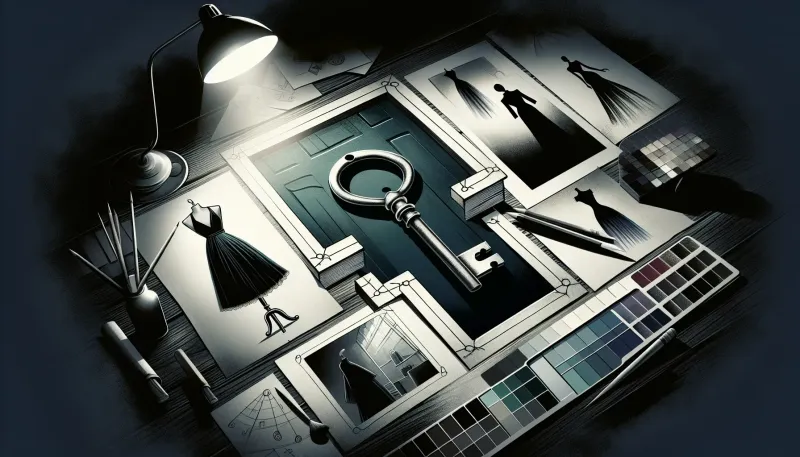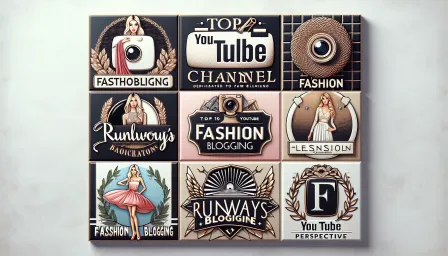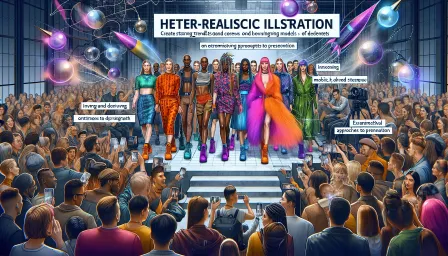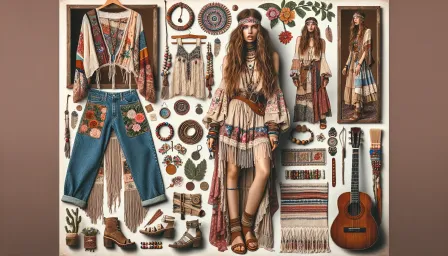Unlock Your Creative Potential with a Fashion Design Degree

Explore the compelling benefits of earning a Fashion Design degree. Unlock your creative potential and pave your way to a successful career in the fashion industry.
A career in fashion design is more than just creating beautiful clothes; it is about understanding the intricacies of design, textiles, and trends to craft garments that captivate and inspire. Obtaining a Fashion Design degree can significantly elevate your capability, visibility, and credibility in this highly competitive industry. This article delves into the numerous reasons why pursuing a fashion design degree is a worthwhile investment for anyone aspiring to make their mark in the fashion world.
Why Pursue a Fashion Design Degree?
1. Comprehensive Curriculum
A Fashion Design degree program offers a comprehensive curriculum that covers all facets of the fashion industry. From understanding textiles and fabric selection to mastering sewing techniques and digital design tools, the coursework is designed to build a solid foundation. Students gain hands-on experience in pattern making, garment construction, and fashion illustration, which are crucial skills for any aspiring designer.
2. Strengthen Creative and Artistic Skills
Creativity and artistry lie at the heart of fashion design. A degree program nurtures these elements by encouraging students to explore different design concepts and innovate. Through various projects and assignments, students learn to push the boundaries of conventional fashion, resulting in unique, cutting-edge designs. The structured environment of a fashion design school also provides the discipline needed to refine and perfect one's creative skills.
3. Industry Connections and Networking
Networking is an essential component of a successful career in fashion. Fashion design schools often have strong connections with industry professionals, providing students with opportunities to network and form valuable relationships. Internships, guest lectures, and industry events organized by the schools offer students a platform to showcase their talent and get discovered by influential figures in the fashion world.
4. Access to Resources and Facilities
Fashion design programs equip students with access to advanced resources and facilities that may be difficult to obtain independently. This includes state-of-the-art design studios, sewing machines, and computer software like Adobe Illustrator and CAD systems. Having access to such resources helps students bring their creative visions to life and gain proficiency in using professional tools.
5. Portfolio Development
A strong portfolio is indispensable for anyone pursuing a career in fashion design. Throughout the degree program, students are required to create a portfolio showcasing their best work. These portfolios serve as a testament to their skills and creativity, making them more attractive to potential employers or clients. Guidance from experienced instructors ensures that students' portfolios highlight their strengths and improve their job prospects.
6. Understanding Fashion Business and Marketing
Fashion design is not just about creating beautiful garments; it also involves understanding the business side of fashion. Degree programs often include coursework in fashion marketing, merchandising, and retail management. These subjects prepare students for the commercial aspects of the industry, teaching them how to market their designs, understand consumer behavior, and manage a fashion business effectively.
7. Global Perspective
The fashion industry is global, with trends and influences coming from various cultures around the world. A fashion design degree program exposes students to international fashion trends and cultures, helping them develop a global perspective. This exposure is invaluable, enabling designers to create innovative and culturally relevant designs that appeal to a diverse audience.
How to Choose the Right Fashion Design School
1. Accreditation
Ensure that the school is accredited by a recognized educational authority. Accreditation guarantees that the school meets certain academic standards and provides quality education.
2. Curriculum and Specializations
Review the curriculum to ensure that it covers the areas of fashion design that interest you. Some schools offer specializations in areas like sustainable fashion, costume design, or fashion marketing, allowing you to tailor your education to your career goals.
3. Faculty Expertise
The expertise of the faculty can significantly impact your learning experience. Research the qualifications and industry experience of the instructors to ensure that you will be learning from seasoned professionals.
4. Alumni Success
Look into the success stories of the school's alumni. Successful alumni can indicate a strong program and provide inspiration and potential networking opportunities.
5. Facilities and Resources
Visit the campus, if possible, to check the facilities and resources available. Ensure that the school has the necessary tools and equipment that will aid your learning and creative process.
6. Internship and Job Placement Assistance
Internships are crucial for gaining real-world experience. Research whether the school offers internship placement assistance and has strong links with industry companies that can help you secure internships and job placements after graduation.
Career Opportunities with a Fashion Design Degree
1. Fashion Designer
As a fashion designer, you can work for established brands or start your own label. Designers create original clothing, accessories, and footwear, often focusing on a particular niche like haute couture, ready-to-wear, or sportswear.
2. Fashion Illustrator
Fashion illustrators create sketches and illustrations that visualize fashion designs. These artists can work for magazines, advertising agencies, or directly with designers to bring their visions to life on paper or digital media.
3. Fashion Merchandiser
Fashion merchandisers analyze market trends, consumer behavior, and sales data to help design collections that will sell. They work closely with designers to ensure that the products cater to the target market and align with the latest trends.
4. Fashion Buyer
Buyers are responsible for selecting and purchasing clothing, accessories, and footwear that will be sold in retail stores. They need a keen eye for trends and a strong understanding of consumer preferences to make purchasing decisions that will maximize sales.
5. Costume Designer
Costume designers create clothing for characters in movies, television shows, theater productions, and other performance arts. This role requires a deep understanding of the story and characters to design costumes that enhance the overall production.
6. Fashion Stylists
Stylists design and coordinate outfits for clients, photo shoots, fashion shows, and events. They need a strong fashion sense and the ability to understand and execute a client's vision.
7. Sustainable Fashion Designer
With sustainability becoming increasingly important in fashion, there is a growing demand for designers who specialize in eco-friendly and sustainable fashion. These designers focus on creating clothing using sustainable materials and ethical production practices.
Conclusion
A Fashion Design degree offers a multitude of benefits, from comprehensive industry education to unparalleled networking opportunities. It equips you with the skills, knowledge, and connections needed to succeed in the competitive world of fashion. Whether you aspire to be a fashion designer, merchandiser, illustrator, or any other role within the industry, a fashion design degree can unlock your creative potential and pave the way for a rewarding career.



























